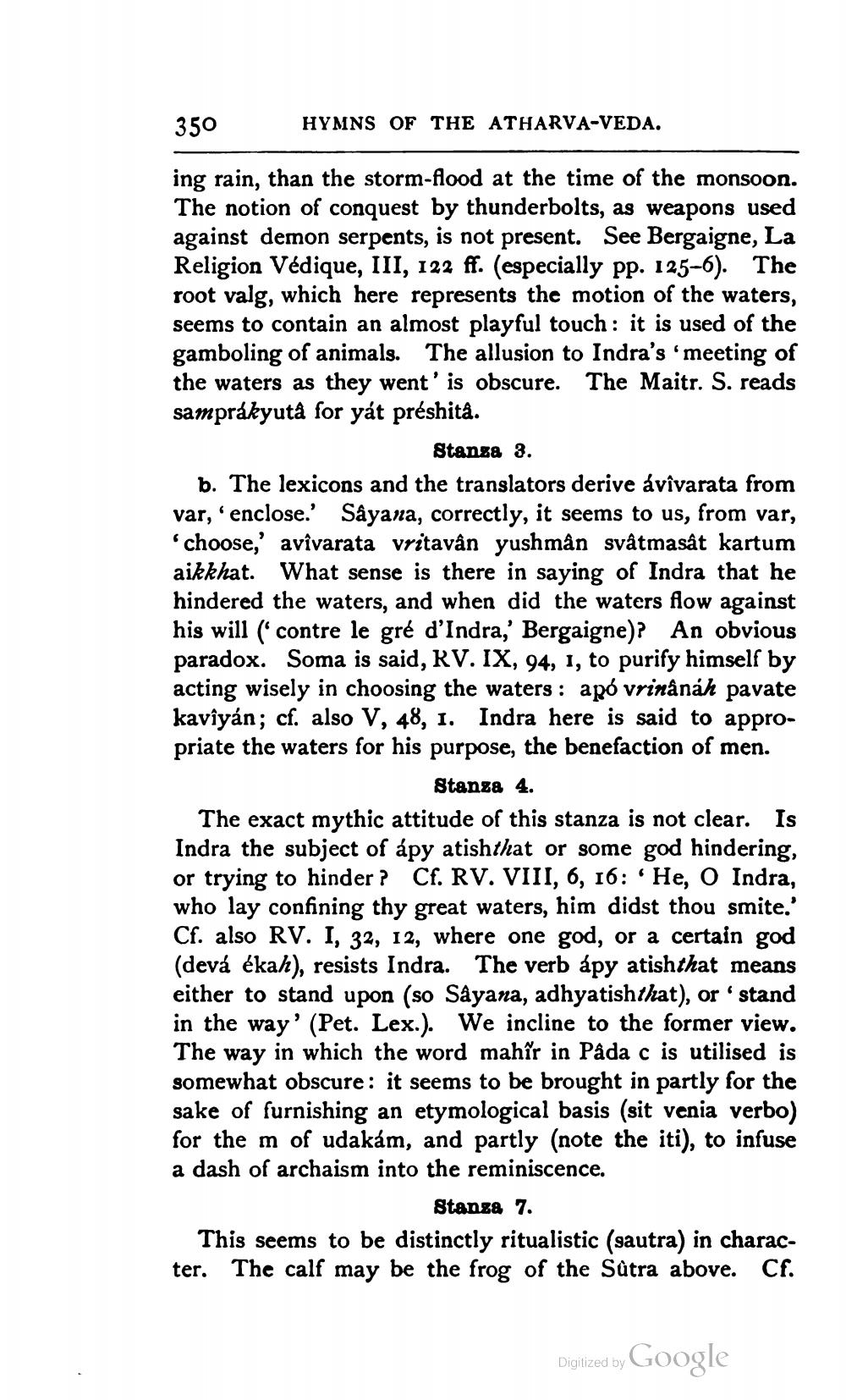________________
350
HYMNS OF THE ATHARVA-VEDA.
ing rain, than the storm-flood at the time of the monsoon. The notion of conquest by thunderbolts, as weapons used against demon serpents, is not present. See Bergaigne, La Religion Védique, III, 122 ff. (especially pp. 125-6). The root valg, which here represents the motion of the waters, seems to contain an almost playful touch: it is used of the gamboling of animals. The allusion to Indra's 'meeting of the waters as they went' is obscure. The Maitr. S. reads samprakyutå for yát préshita.
Stanza 3. b. The lexicons and the translators derive ávivarata from var, enclose.' Sayana, correctly, it seems to us, from var,
choose,' avivarata vritavân yushmân svåtmasåt kartum aikkhat. What sense is there in saying of Indra that he hindered the waters, and when did the waters flow against his will contre le gré d'Indra,' Bergaigne)? An obvious paradox. Soma is said, RV. IX, 94, 1, to purify himself by acting wisely in choosing the waters : apó vrinânáh pavate kaviyán; cf. also V, 48, 1. Indra here is said to appropriate the waters for his purpose, the benefaction of men.
Stanza 4. The exact mythic attitude of this stanza is not clear. Is Indra the subject of ápy atishthat or some god hindering, or trying to hinder ? Cf. RV. VIII, 6, 16: 'He, O Indra, who lay confining thy great waters, him didst thou smite.' Cf. also RV. I, 32, 12, where one god, or a certain god (devá ékah), resists Indra. The verb ápy atishthat means either to stand upon (so Sâyana, adhyatishthat), or stand in the way' (Pet. Lex.). We incline to the former view. The way in which the word mahîr in Pâda c is utilised is somewhat obscure: it seems to be brought in partly for the sake of furnishing an etymological basis (sit venia verbo) for the m of udakám, and partly (note the iti), to infuse a dash of archaism into the reminiscence.
Stanza 7. This seems to be distinctly ritualistic (sautra) in character. The calf may be the frog of the Sūtra above. Cf.
Digitized by Google




